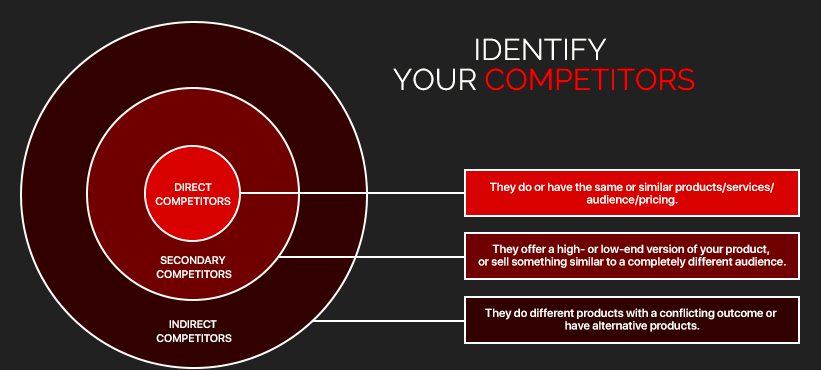Direct Vs Indirect Competitors, How to Approach Strategically?
BUSINESS STRATEGY


🟠Protecting strategically against both direct and indirect competitors requires a nuanced approach tailored to each type of competition. Here's how you can approach it:
Protecting Against Direct Competitors
Direct competitors are companies that offer the same or very similar products or services. To protect against them, consider the following strategies:
Differentiation: Clearly define and emphasize what makes your product or service unique. This could be in terms of quality, features, customer service, or innovation. A strong value proposition is key.
Brand Loyalty: Invest in customer retention programs to build brand loyalty. Offering superior customer service, loyalty programs, or exclusive benefits can help in retaining customers.
Pricing Strategy: Use a pricing strategy that reflects your positioning. This could be cost leadership, premium pricing, or value-based pricing. Monitor competitors' pricing closely to stay competitive without undercutting profitability.
Innovation and R&D: Continuously invest in research and development to stay ahead of direct competitors by improving your products/services or creating new ones.
Niche Focus: Focus on niche markets where your business has a competitive advantage. By targeting a specific audience, you reduce competition from larger or generalist competitors.
Partnerships and Alliances: Form strategic alliances with complementary businesses. This could strengthen your market position and create new revenue streams.
Protecting Against Indirect Competitors
Indirect competitors offer different products or services that fulfill the same customer need. Here’s how to protect against them:
Understand Substitute Products: Analyze the substitute products or services that could fulfill the same customer need. Understanding their value proposition helps you highlight why your solution is better suited for the customer’s problem.
Adapt to Changing Consumer Preferences: Indirect competitors often emerge due to shifts in consumer preferences or technological advancements. Stay agile and flexible by adapting your product or service offering to meet new demands.
Customer Education: Educate your customers about the advantages of your product or service compared to alternatives. Highlight unique features or benefits that indirect competitors might not offer.
Monitor Market Trends: Keep an eye on broader market trends, including economic changes, technological advances, and shifts in consumer behavior that might introduce new forms of competition.
Diversification: Consider diversifying your product or service offerings to meet a broader set of customer needs. This reduces your vulnerability to changes in the market or consumer preferences.
Strategic Branding: Focus on building a strong brand identity. When your brand becomes synonymous with a particular need, it makes it harder for indirect competitors to pull customers away.
By strategically differentiating yourself and adapting to the broader competitive landscape, you can protect against both direct and indirect competition while positioning your business for long-term success.
